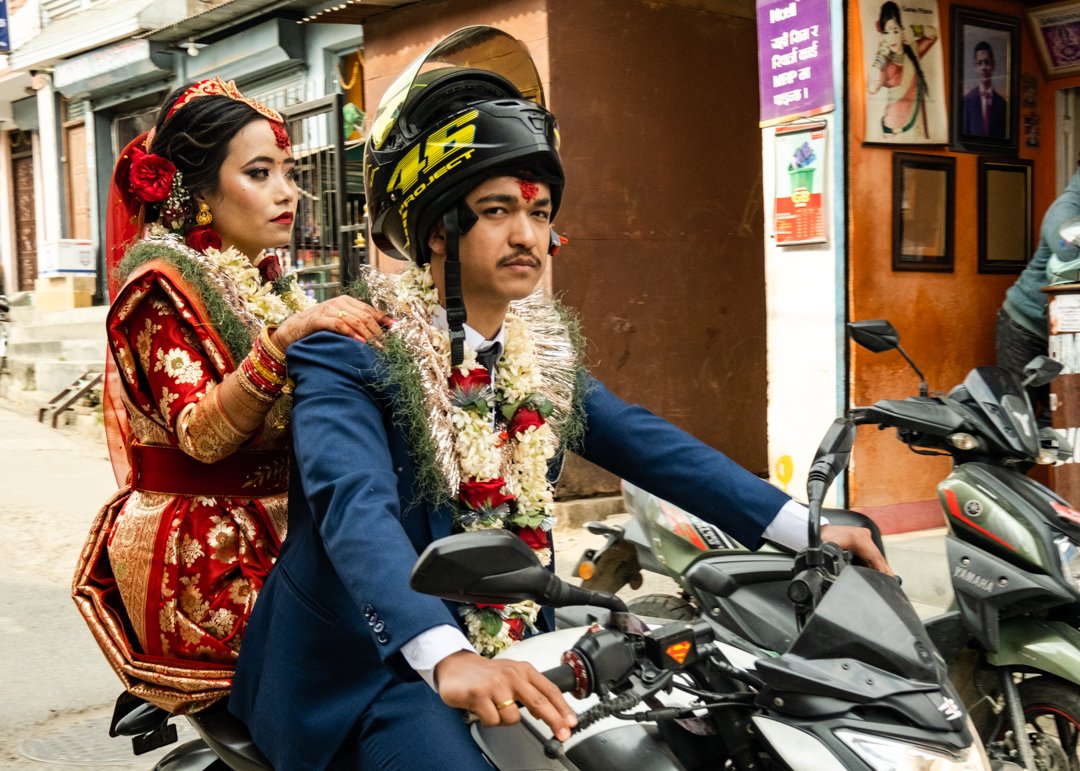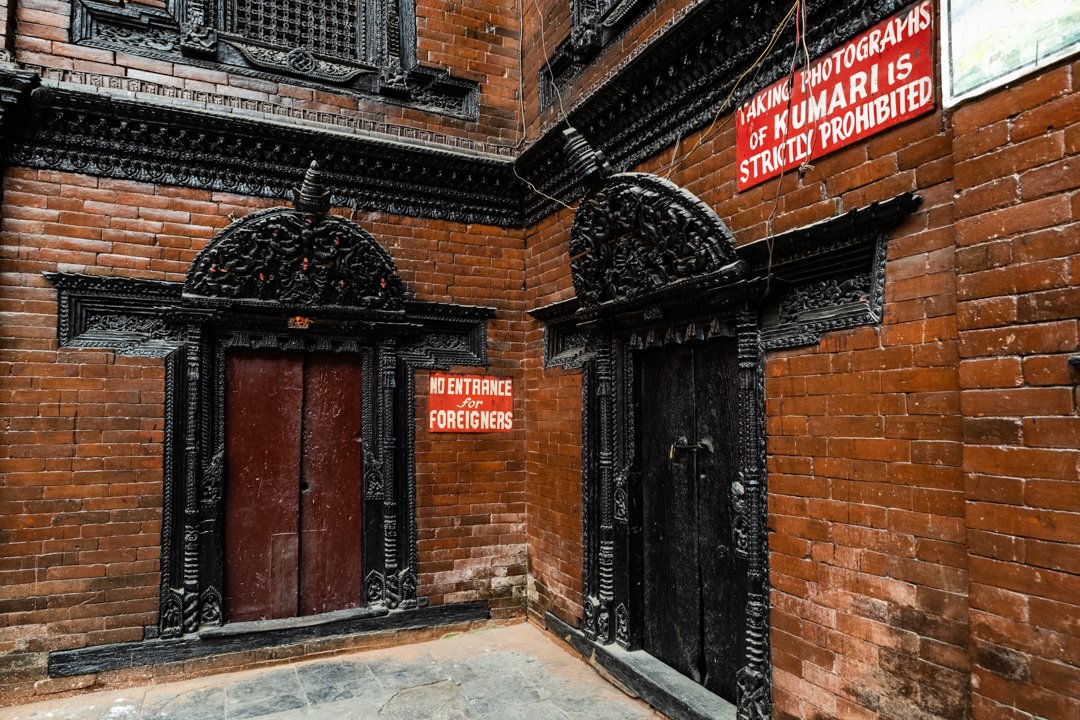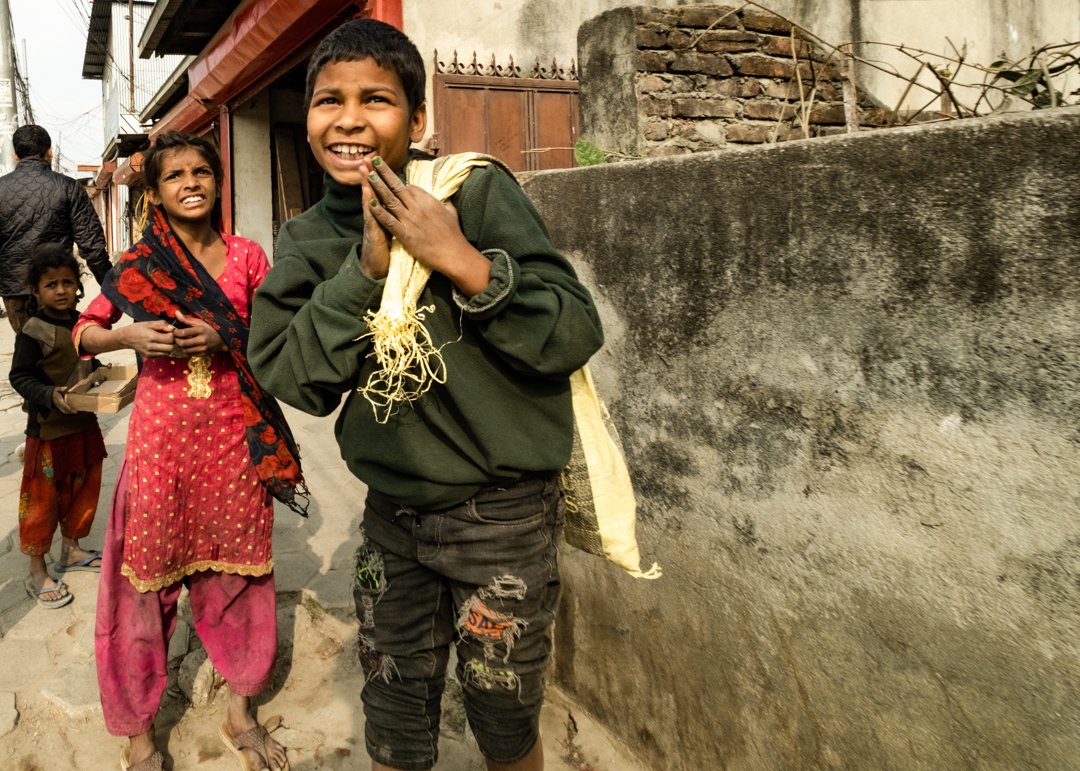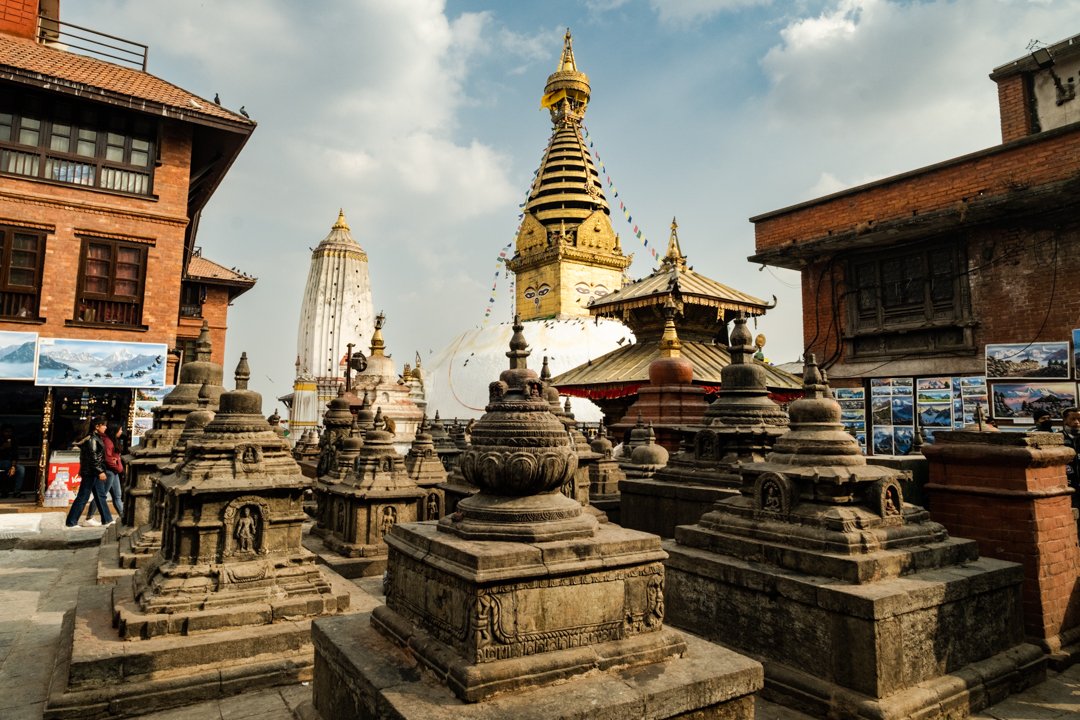The biggest surprise was to find the population of Nepal was over 80% Hindu and not predominantly Bhuddist as I first thought. The second surprise was the quietness. This is a relatively new phenomenon. Three years ago honking the horn was banned - unless you can validate its use. The traffic police have come down hard on the road traffic causing recent protests from the taxi drivers. I have to say after India, I’m enjoying not having my ears assaulted.
We are staying in the Thamel neighborhood of Kathmandu, a very popular backpackers area. Wires are strung up all over the city, but are slowly being tidied up. Kathmandu used to practice “load sharing,” so during the day there were scheduled power cuts to help conserve energy, this has nearly all been eradicated in the major cities but you still get caught out with power cuts.
The area is just one big souvenir, trekking and pashmina shop. Cheap imitations getting caked in dust. If the pashminas were real they wouldn’t be hanging on the dusty roadside. The contents of the shops are predominately out on the street, the shopkeepers hidden inside in the dim light.
Kathmandu is very, very dusty due to brick factories, building works and unfinished roads being churned up by rickshaws, motorbikes and cars. The air is constantly filled with a haze of dust that makes the air have a golden glow.
On the face of it I wouldn’t say Kathmandu is a particularly attractive city or very photogenic. However, look beyond the main shopping thoroughfare and the tourists and it’s another story - we found interesting dark narrow alleys, buildings shored up, courtyards and a calmer view of everydaylife.
We made our way to Durbar Square as suggested by the manager of our hotel in order to witness a phenomen we would never have experienced before.
How could we say no!
With only seconds to spare we made it to an inner courtyard just as the doors were shutting. About 20 of us were locked in. There was a strange air of expectation. We were told to put our phones and cameras away, quite a few times and a few times more. Photography was not allowed under any circumstances.
We were about to witness the presence of a living Goddess - the Kumari. A living reincarnation.
An old woman appears at the window to scan the group for any photography equipment and then…. a gasp from the crowd and she appeared. A young girl, a very young girl, always chosen from a clan of the Newari community to be a living Goddess.
The bejewelled Royal Kumari stared down at us. No flicker of emotion, just stared.
Officials were touching their foreheads, praying or just gasping in awe. She will carry out this role - appearing at the window each day- until she reaches menstruation age then she will no longer be a goddess and will be integrated back into society.
Throughout her Goddess life she has to pass ritual tests and be inspected for 32 specific attributes of physical beauty, including a neck like a conch shell, eyelashes like a cow, a chest like a lion, and thighs like a deer. Her eyes and hair must be black. And she must be brave.
‘The-would-be Kumaris are kept in a dark room with slaughtered buffalo heads while men dance around to monitor their levels of “fearlessness,” says a former Kumari, Rashmila Shakya in her autobiography, From Goddess to Mortal. She found the transition from being living goddess to just another girl was emotionally challenging.
Apparently Kamari tradition is frowned upon by child protection groups.
Once the Goddess had gone back inside we were allowed to take photographs then the doors were unlocked and we were set free. Well the hotel manager was right, we have never experienced anything like that before!
There are a number of beggars, but, although not rich, people do give to the most needy.
We climbed up 180 steps to the Swayambhunath temple, also known as the Monkey Temple. Swayambhunath sits high on a hill overlooking the Kathmandu Valley, it was relatively quiet and peaceful here, and the temple is beautiful.
While the 2015 earthquake was devastating, it didn’t change the heart of the city. Much of the city escaped the damage too, while the ancient parts that were hit still live on with all the character of Kathmandu. It’s not a place you can really compare to any other. While it does possess a chaos somewhat similar to India, everything else about Kathmandu is too different to really compare.
We really liked it here because of the the people. The Nepali people are very welcoming, polite, and friendly and they went out of their way to make our visit very enjoyable. It is often said that people first come to Nepal for the mountains, but return for the people.
That will most likely be true in our case!
In the meantime it’s time to pack our bags and head up the mountain.






















